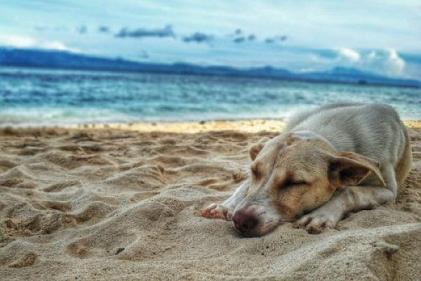 Believe it or not, a goldfish can live for 10 to 25 years or longer if it's given proper care.
Believe it or not, a goldfish can live for 10 to 25 years or longer if it's given proper care.
It can be easy to forget that stress and hygiene can affect your tiny little fish enormously, but controlling those factors can have a massive impact on your fish's lifespan.
1. Get the largest possible tank
At least 75 litres is necessary to make quality life for a single fish. Choose a tank with large surface area to increase the amount of oxygen in contact with the surface of the water. Wider is better than taller.
2. Set up the tank beforehand
Getting a tank ready may take two or more weeks. It is necessary to build up enough good bacteria to break down the fish' wastes. To do this, do a ‘fish-less cycle’. Once completed, your goldfish aquarium will have more than enough bacteria to break down fish waste. Failure to cycle a tank will result in ammonia poisoning and death.
3. Provide mental and physical stimulation
Decorate the tank with gravel, driftwood, hardy live plants. Be sure that any decorations you choose aren't hollow (harmful bacteria can grow inside) and that they don't have sharp edges as your fish might tear its fins. Provide your fish with different areas in the tank, such as an open area ideal for swimming and a hiding area.
4. Increase oxygen diffusion into the water
A small air pump and air stone can be sufficient. You can also have the current from a 'waterfall' type filter help agitate the water's surface.
5. Keep the tank clean
Clean the tank at least once every two weeks, but more frequently is preferable due to the large amount of waste goldfish produce. Consider buying a filter, because goldfish produce a lot of faeces, which can lead to a build-up of ammonia and nitrites, which are potentially harmful to your fish. If you don't have a filter, clean the tank twice a week.How often you do this will depend on the size of your tank, the number of fish, and the effectiveness of the filter. Real plants are great as they will help absorb some of the ammonia, nitrites and nitrates.
6. Don't remove the goldfish during a water change
Using a gravel vacuum to suck debris out of the gravel can be done with the fish in the tank. Frequent partial water changes are much better than full and stressful water changes.
7. Allow the water temperature to change as seasons change
While goldfish don't like temperatures over 24°C, they do seem to like seasonal variations where the temperature falls to 15-20°c in the winter. Be aware that goldfish will not eat below 10-14°c.
8. Feed you fish right
Feed the goldfish one to two times daily with food specifically designed for goldfish. If you choose to feed them more often, then reduce the size of the meals so you don't overfeed. Give them only as much as they can eat in a few minutes, and clean any leftovers immediately. If a floating food is used, soak it in water for a few seconds before feeding so that it will sink. This reduces the amount of air the fish swallows while eating, which in turn reduces the risk of buoyancy problems.
Image via Pinterest.






